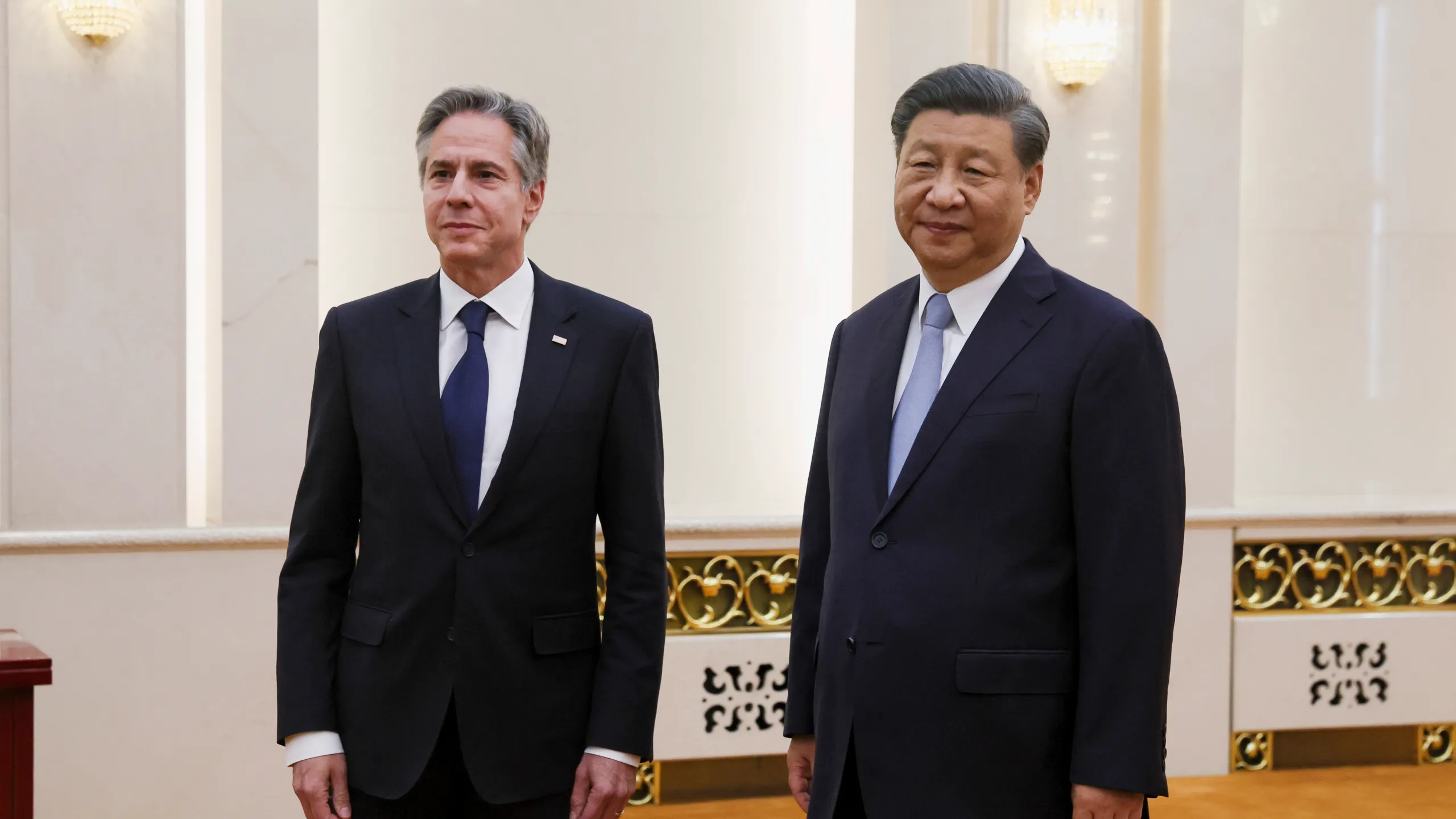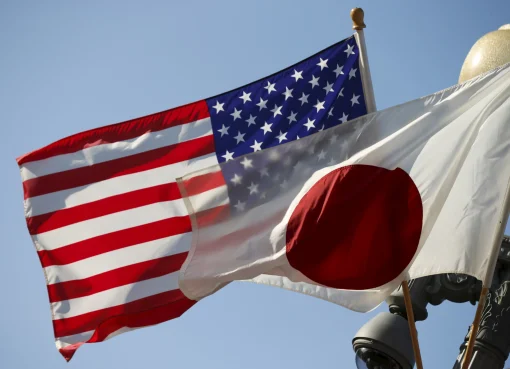Blinken’s Urgent Challenges: Navigating Crucial Tensions

United States Secretary of State Antony Blinken’s recent visit to China proved to be a frustrating experience for all parties involved, a testament to the continuing diplomatic tensions between the two nations. Even from the first moments, as Blinken landed on Beijing to meet the Chinese leadership, it was clear that it would be an uphill struggle. Over the course of his conversations with Premier, Foreign Minister, and other key authorities, the Secretary addressed human rights, trade disputes, and geopolitics.
However, the conversations placed his diplomatic acumen to the most stringent challenge. The sides remained fixed on their standpoints. China stressed its sovereignty, while the U.S. underlined its dedication to the norms and values of the present global order. And the world asked one question – Would Blinken manage to navigate the narrow and slippery path of Chinese diplomatic discourse to push the Chinese to a more cooperative position? In the following article, we attempt to scrutinize the possibilities and identify the most likely wdbos outcomes and their implications for both nations.

Overview of Blinken’s trip to China
Antony Blinken faced extensive expectations during his China visit due to deteriorating relationships between the two countries. Major issues to tackle included systemic human rights breaches, trade interests, and components of the geopolitical confrontation. As a representative of the United States, Blinken was under great pressure to make progress in these spheres.
The Secretary of State held a series of meetings with the Chinese administration, where the two sides provided their positions. China reiterated its role and sovereignty, while both parties mentioned their serious differences over the specific spheres. Hence, from the first meetings, it became apparent that Antony Blinken would need to solve multiple diplomatic issues.
Key diplomatic dilemmas faced by Blinken
Blinken faced several significant diplomatic dilemmas during his visit to China. One of the main problems was agreeing on the issue of human rights. The United States has repeatedly expressed its concerns about the Chinese authorities’ treatment of marginalized groups . Therefore, Blinken had to discuss this problem with Chinese authorities. However, China has consistently dismissed external criticism as interference, so it was not likely to make any concessions to the United States on this issue.
Equally challenging was the problem of the trade balance between the two countries. The United States often accused China and blinked of unfair trade practices such as currency devaluation, theft of intellectual property, and monopoly building . Blinken tried to seek a way to reduce the differences between the countries in terms of trade rules, but China was unlikely to agree to make significant concessions in this sphere, as well. Finally, there were the geopolitical concerns.
The United States accused China of excessive activity in the South China Sea and human rights abuse in Hong Kong . However, if he were to demand that China rectify the situation, it would also not be willing to do so.
Analysis of Blinken’s approach to China
Blinken’s manner of addressing China appears to be a combination of caution and apparent collaboration. On the one hand, he affirmed the profound continuity of the USA’s commitment to international principles and pillars such as human rights and equitable trade . Thus, Blinken barely left room for doubt that his country would not yield on matters of principle, thus putting China on notice that the USA would be very vigorously engaging with this issue.
Also, Blinken brought up the problem of China’s exports of CO2 and reiterated the importance of addressing climate by all. On the other hand, the issue of global health or the Wuhan origin of the virus became the common ground that could be discussed. Furthermore, he acceded China’s standing in the world and communicated the USA’s readiness to participate in joint projects.

Impact of Blinken’s trip on US-China relations
It is too early to tell the impact of Blinken’s trip on US-China relations. The meetings, though seemingly controversial, initiated direct diplomatic dialogues, which helped the two sides entrust the other with the complexity of their position. This journey might indicate the beginning of dialogues and negotiations that would be held or resumed in the future. Nonetheless, the controversial position still exists on the fundamental level. Blinken’s diplomatic dilemmas demonstrate the excessive deep-seated mistrust towards each other as well as the different priorities and goals. Surely, regarded as an event, one trip is not enough to fix it.
Public and media reactions to Blinken’s trip
The reaction in the public and the media with regard to Blinken’s trip is also controversial. Some praise Blinken for his strong approach to human rights as well as the strive to solve trade disparities. They believe that this is a progressive step to make China face the consequences of its policies. On the other hand, some individuals doubt China’s readiness to rehabilitate and comply with international standards. In this way, media coverage of the trip is controversial too. While some outlets acknowledge the severity of the challenges the US Secretary of State had faced, the others distance the trip itself since it has not achieved any substantive success.
Lessons learned from Blinken’s trip
Blinken’s trip to China provides valuable lessons for future diplomatic engagements. It underscores the importance of clear communication and understanding between nations with differing priorities and values. Diplomatic success requires careful navigation of complex issues and an appreciation of the cultural and political factors at play.
Additionally, Blinken’s trip serves as a reminder that diplomatic efforts alone may not be sufficient to address the deep-rooted challenges in the U.S.-China relationship. It highlights the need for a comprehensive and multifaceted approach that includes economic, strategic, and cultural dimensions.
Future prospects for US-China diplomacy
The future prospects for U.S.-China diplomacy remain uncertain. While Blinken’s trip may have paved the way for future negotiations, significant obstacles still exist. The deep-seated distrust and differing priorities between the two nations will continue to be major hurdles to overcome.
However, there is also room for cautious optimism. The challenges faced by both countries, such as climate change and global health, require international cooperation. Finding common ground on these issues could provide an opportunity for the United States and China to build trust and work towards a more constructive relationship.
Comparison with previous diplomatic visits to China
Blinken’s trip can be compared to previous diplomatic visits to China to gain insights into the evolving dynamics between the two nations. While each visit is unique, a comparison can highlight trends and patterns in the U.S.-China relationship.
One notable difference is the increasing assertiveness of China on the global stage. Previous diplomatic visits may not have encountered the same level of resistance and diplomatic dilemmas as Blinken’s trip. This shift in China’s approach reflects its rising power and growing confidence in asserting its interests.

Expert opinions on Blinken’s trip
Experts have weighed in on Blinken’s trip, offering their analysis and predictions for the future of U.S.-China relations. Some experts believe that the trip was a necessary step in addressing key concerns and maintaining open lines of communication. They argue that sustained engagement is crucial for managing the complex challenges posed by China’s rise.
Others, however, are more skeptical about the effectiveness of diplomatic efforts. They argue that China’s assertiveness and reluctance to make substantial concessions make it difficult to achieve meaningful progress through dialogue alone. These experts advocate for a more robust and comprehensive approach that includes economic and strategic considerations.
Conclusion
Antony Blinken’s trip to China was undoubtedly exasperating, as he faced a series of challenging diplomatic dilemmas. From human rights concerns to trade imbalances and geopolitical tensions, the trip highlighted the deep-rooted complexities in the U.S.-China relationship.
While the impact of Blinken’s trip on US-China relations remains uncertain, it serves as a valuable opportunity for dialogue and understanding. The lessons learned from this trip can inform future diplomatic engagements and contribute to a more nuanced approach to U.S.-China relations. As both nations navigate the treacherous waters of diplomacy, the world watches with anticipation, hoping for progress towards cooperation and understanding.



Leave a Comment